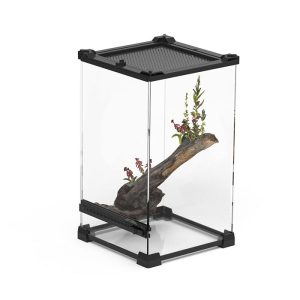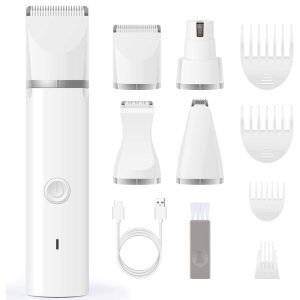How to care for a 10 week old puppy
I. Puppy Dietary Plan
1. Puppies experience extremely rapid growth during the 10-week period, and their digestive systems are not yet fully developed. The feeding should absolutely follow the small portions, multiple meals rule. Feeding should be done at fixed times every day: 7 AM, 12 PM, 5 PM, and 9 PM before sleeping. The size of the servings should be changed according to the breed- roughly 50 grams for small breeds and 80 grams for medium ones. When buying a complete food for puppies, always check the composition of the food. Choose the products that have ≥25% animal protein content and do not allow low-cost formulas that contain a large amount of grains like corn or wheat.
2. No human food should ever be given to puppies, such as milk, chocolate, onions, or grapes. Take a stainless steel bowl only for food and put it in a quiet place where your baby won’t be disturbed during meal time.
3. Always provide fresh water for drinking. You can occasionally give them some steamed and shredded chicken breast to eat, but only once a week in order to increase the protein intake, however, keep it under 10% of total food volume so that they don’t eat less from their main meal.
II. Ensuring Puppy Safety and Comfort
1. Make a place for your dog to live, a corner of the living room or bedroom would be perfect, but it should be far enough from balconies, kitchens and electrical wires. Choose a soft cotton-padded sleeping mat. Put a waterproof pad under it in case of accidents. The cost of an average new puppy bed is $15-$30. For the smaller ones, put a soft toy that will pretend to be a friend and make your baby less lonely.
2. Keep cleaners, medicines and other toxic things for the house in tall cupboards. Remove small things from your floor’s holes immediately so that your baby does not eat them by mistake. Put a pee pad close to the bed, about 1 meter away. Spray pet attractant around the pad’s edges so that the puppy will quickly understand the place of elimination and rest. Use toys made of non-toxic rubber with a diameter ≥5 cm. The cost per piece is usually between $5-10. Clean floors and toys twice a week with diluted disinfectant for pets. Wash bedding 1-2 times a month with warm water, and make sure that it is fully dry before the next use.
III. Prioritizing Puppy Health
1. A 10 week aged puppy should be vaccinated for the first time and should be guided by a vet. Generally, this includes 2-in-1 and 4-in-1 Canine vaccines. Single shot vaccines cost somewhere between $20 and $40. Avoid crowded places like parks and pet hospitals for one week after vaccination.
2. Parasites both internal and external, should be treated at the same time. For internal deworming, select an oral drug that is given according to the weight (e.g. 1 tablet per 2 kg of body weight) and costs around $5-10 per dose. For the external side, use spot-on solutions that are put between the shoulder blades, and the area should not be touched to prevent the dog from licking it. Each application costs around $8-15. You must watch your pet’s condition every day. If you observe that your pet is lethargic, has a dry nose, or the stool is abnormal (e.g., loose, bloody), then take it to the vet within 24 hours. The cost of a basic check-up is between $40 and $60.
3. Grooming weekly: Combing the
coat should be done 2-3 times a week with a slicker brush. It should be brushed according to the hair direction from the head to the tail. Cutting any matted hair with the help of scissors. Trimming nails monthly with the help of pet-specific cutters and not cutting the blood vessels inside the nail. If there is bleeding then immediately put styptic powder on it.
IV. Basic Behavior Training
1. At this period puppies must learn the rules. The training method should obey the rules of gradual progression and positive reinforcement. The first thing you should do is to teach your dog its name. Gently calling their name just before each meal. Feeding them only after their response. Repeat for 3-5 days so that they get used to their name. The next step will be to teach «Sit». At the same time, keep your right hand palm down and move it over the dog’s head while softly saying «Sit». If they don’t, then assist them by gently pressing their hips with your left hand. Upon completion, immediately give 1-2 pieces of puppy kibble as a reward. Keep each training session to 5-10 minutes and do it 2-3 times a day.
2. If they are chewing the furniture or peeing in the wrong place, then immediately say «No» in a firm but gentle manner. Give the puppy a toy to play with or bring it to the potty pad to distract it. Do not hit or shout as this may cause fear. If the puppy is on the potty pad, then immediately give it some petting and treats thus encouraging the correct conduct.
admin
-
Sale!

Washable Pet Cooling Pad for Cats and Dogs
$10.99Original price was: $10.99.$9.99Current price is: $9.99. This product has multiple variants. The options may be chosen on the product page -
Sale!

Washable Cat Window Hammock Cooling Bed
$23.99Original price was: $23.99.$22.99Current price is: $22.99. -
Sale!

Tropical Amphibian Rainforest Tank, Lizard Cage
$38.99Original price was: $38.99.$36.99Current price is: $36.99. -
Sale!

Silent 4-in-1 Waterproof Charging Dog Hair Trimmer
$49.88Original price was: $49.88.$47.99Current price is: $47.99.
